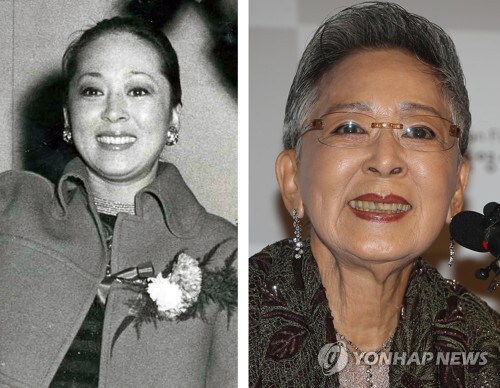 |
| ▲ This photo, provided by the Gwangneung Arboretum shows a longhorn beetle. (PHOTO NOT FOR SALE) (Yonhap) |
POCHEON, Aug. 21 (Yonhap) -- The Gwangneung Arboretum announced Friday that ten small transmitters have been placed into the Gwangneung Forest in search of longhorn beetles.
This year, five males and six female beetles, were found in Gwangneung Forest, while the other four were raised at the Gwangneung Arboretum.
The longhorn beetles were designated as a Natural Monument No. 218 in November 1968 and are classified as an endangered wildlife in May 2012.
Currently, the beetles have been confirmed to inahbit in the Gwangneung Forest, so the Gwangneung Arboretum are trying to find out more ecological information, including conducting a search for the insects.
Until now, the National Arboretum has been experimenting indoors to find out the flight capabilities of longhorn beetles and expects to be able to light up the range of movement in its habitat by attaching a transmitter to the objects it radiated.
The long-horned beetle is the largest species of beetles in Asia and Europe, biologically. The male body is 8.5 to 10.8 centimeters long and the female body is 6.5 to 8.5 centimeters long.
Longhorn beetles in Korea were first recorded by entomologist Cho Pok-sung in 1934.
As the population of the beetles rapidly decreased, the Cultural Heritage Administration designated it as a natural monument and the Ministry of Environment designated it as a first-class endangered wildlife.
In 2006, a female was observed in Gwangneung Forest. Earlier in 2002, a male beetle was found, but it was a dead body.
It has not been observed again since then, but has been discovered every year since 2014.
The National Arboretum is conducting research to ensure stable preservation of long-horned sky cows, and has succeeded in breeding the species that it has discovered so far, raising more than 450 animals.
(END)
(C) Yonhap News Agency. All Rights Reserved













![[가요소식] 지코, 요아소비 이쿠라와 신곡 '듀엣' 발매](https://korean-vibe.com/news/data/20251212/yna1065624915953509_920_thum.jpg)









